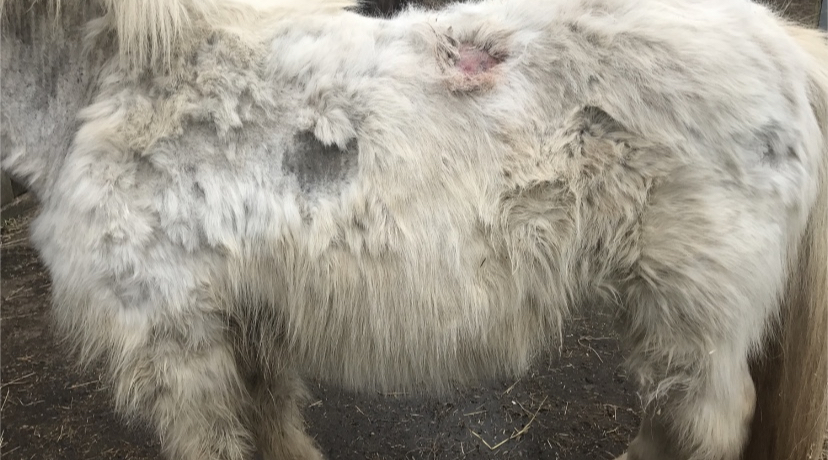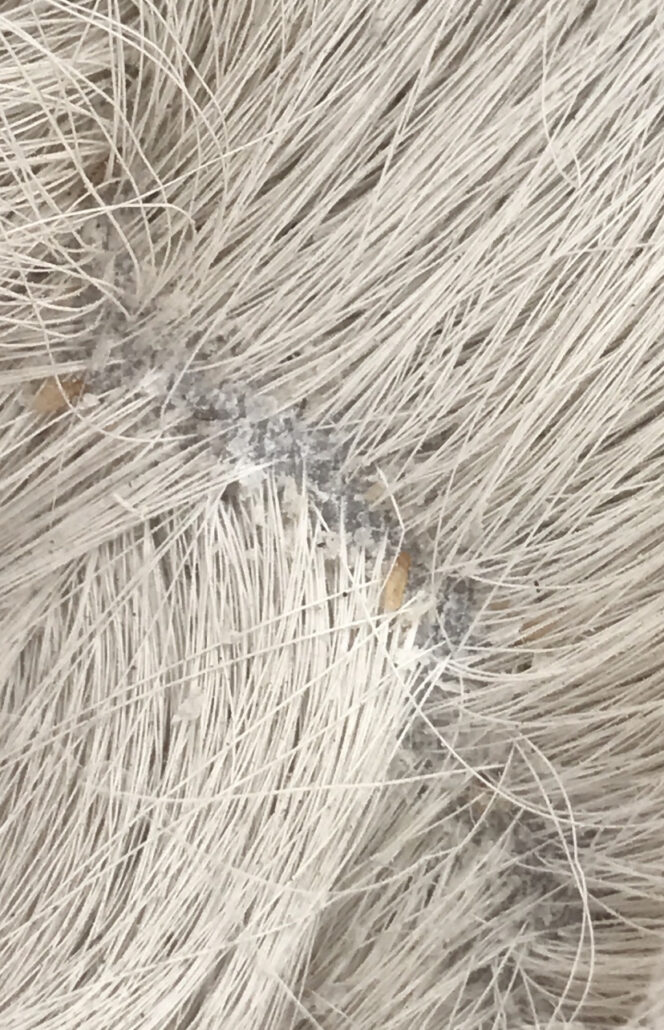
pony with lice
Our horse’s thicker and longer coats over the winter months becomes an ideal breeding ground for lice, especially when we then cover them in a warm rug. The life cycle of the louse is complete within 4 weeks and eggs hatch 10 days after being laid. Eggs or nits are small (1mm), yellow-white in colour and glued tightly to the base of hairs.

Lice are incredibly contagious and can affect horses of all ages but those kept in large groups indoors, the elderly, young and those with immunosuppressive conditions such as malnourishment and Cushing’s Disease are at an increased risk.
The feeding nature of the lice causes intense skin irritation with horses becoming extremely itchy. This can lead to patchy hair loss and a scurfy coat. In severe infestations the horse or pony can become anaemic.
Lice can be readily spotted by parting the horse’s fur especially along the topline.
Treatment involves topical application of a permethrin or cypermethrin product applied twice at two-week intervals. In contacts should be checked and treated in addition to washing rugs, numnahs, head-collars at a high temperature.
Clipping should also be considered.
Remember, lice are species specific and equine lice do not live on human hair/skin
